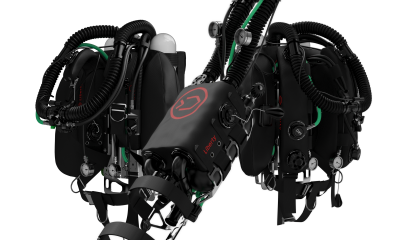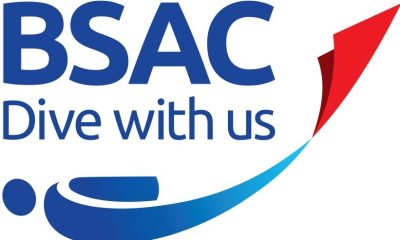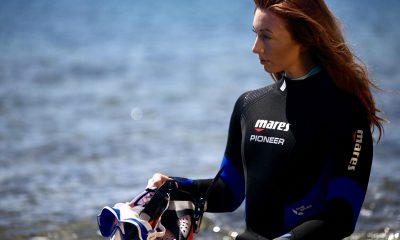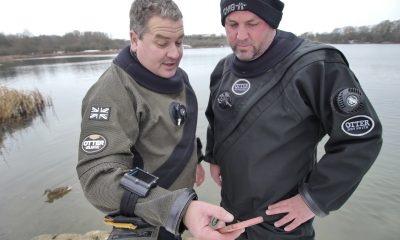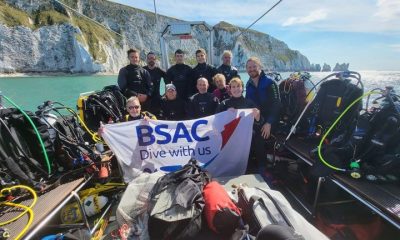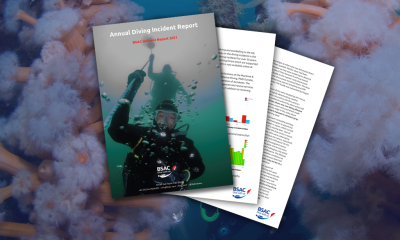News
Kingston & Elmbridge SAC celebrates 60 years underwater
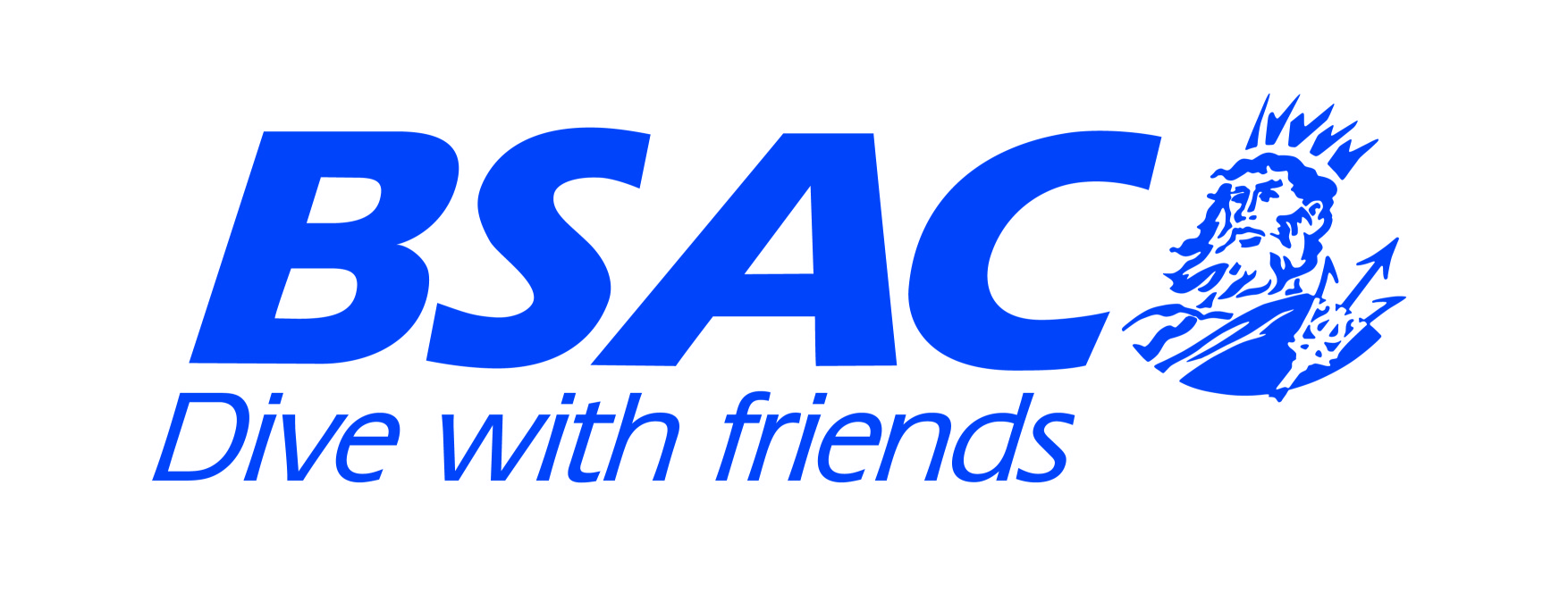
Tolworth-based Kingston & Elmbridge SAC has just marked its 60th anniversary led by a president who is still a passionate diver at the age of 70.
The Kingston and Elmbridge branch opened in February 1955, with just half a dozen members hiring a small meeting venue in the local YMCA club.
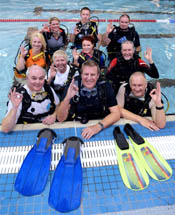 Now the club proudly lists 85 members and enjoys regular underwater explorations as well as weekly meetings at the clubhouse it acquired 30 years ago after the construction of the M25.
Now the club proudly lists 85 members and enjoys regular underwater explorations as well as weekly meetings at the clubhouse it acquired 30 years ago after the construction of the M25.
Gerry Hassell joined the group at the age of 18 in 1963 and after 52 years is now the longest serving active member, and the current club president.
He said: “When I first started diving we made our own single skin 3mm wetsuits and dived with twin hose regulators with no non-return valves in and no buoyancy aids.
“Safety standards have improved immensely and everyone now receives comprehensive training. When I first started diving you were literally thrown in the deep end!”
Having enjoyed great success as a diver, Gerry has also seen the club accept various awards and accolades over the years.
He said: “Probably my proudest moment was under the guidance of Major Hume Wallace who was a marine archaeologist.
“The club won the Duke of Edinburgh’s award in 1969 for our marine research into the amphitheatre off the tip of Selsey and as a reward for our research Hume Wallace, myself and several club members were invited to Buckingham Palace to receive the award from the Duke of Edinburgh.”
As the club grew so did its need for premises and when work began on the M25 motorway 40 years ago this year, an opportunity presented itself to the divers.
Gerry said: “In 1985, we managed to obtain some land from Kingston Council. We then went on to purchase from Balfour Beatty one of their main office mobile units that was used on the construction site of the M25.
“We stripped the large cabin down, transported it to our new site off Hook Rise South, Tolworth, and re-erected it complete with a new roof and cladded sides. It remains our clubhouse today.”
Mary Tetley, BSAC Chief Executive, said: “We offer our warmest congratulations to Kingston and Elmbridge BSAC on reaching their 60th anniversary.
“Our organisation is made up of family-friendly, welcoming clubs up and down the country and abroad and it is thanks to the dedication of volunteers like Gerry that the clubs continue to thrive.”
For more information about the club go to www.kingstonsac.org.
News
Dive Worldwide Announces Bite-Back as its Charity of the Year

Over the next 12 months, specialist scuba holiday company Dive Worldwide will be supporting Bite-Back Shark & Marine Conservation with donations collected from client bookings to any one of its stunning dive destinations around the world. The independently-owned operator expects to raise £3000 for the UK charity.
Manager at Dive Worldwide, Phil North, said: “We’re especially excited to work with Bite-Back and support its intelligent, creative and results-driven campaigns to end the UK trade in shark products and prompt a change in attitudes to the ocean’s most maligned inhabitant.”
Bite-Back is running campaigns to hold the media to account on the way it reports shark news along with a brand new nationwide education programme. Last year the charity was credited for spearheading a UK ban on the import and export of shark fins.
Campaign director at Bite-Back, Graham Buckingham, said: “We’re enormously grateful to Dive Worldwide for choosing to support Bite-Back. The company’s commitment to conservation helps set it apart from other tour operators and we’re certain its clients admire and respect that policy. For us, the affiliation is huge and helps us look to the future with confidence we can deliver against key conservation programmes.”
To launch the fundraising initiative, Phil North presented Graham Buckingham with a cheque for £1,000.
Visit Dive Worldwide to discover its diverse range of international scuba adventures and visit Bite-Back to learn more about the charity’s campaigns.
MORE INFORMATION
Call Graham Buckingham on 07810 454 266 or email graham@bite-back.com
Gear News
Scubapro Free Octopus Promotion 2024

Free Octopus with every purchase of a SCUBAPRO regulator system
Just in time for the spring season, divers can save money with the FREE OCTOPUS SPRING PROMOTION! Until July 31st SCUBAPRO offers an Octopus for free
with every purchase of a regulator system!
Get a free S270 OCTOPUS with purchase of these combinations:
MK25 EVO or MK19 EVO with A700
MK25 EVO or MK19 EVO with S620Ti
MK25 EVO or MK19 EVO with D420
MK25 EVO Din mit S620Ti-X
Get a free R105 OCTOPUS with purchase of the following combinations:
MK25 EVO or MK19 EVO with G260
MK25 EVO or MK17 EVO with S600
SCUBAPRO offers a 30-year first owner warranty on all regulators, with a revision period of two years or 100 dives. All SCUBAPRO regulators are of course certified according to the new European test standard EN250-2014.
Available at participating SCUBAPRO dealers. Promotion may not be available in all regions. Find an authorized SCUBAPRO Dealer at scubapro.com.
More information available on www.scubapro.com.
-

 News3 months ago
News3 months agoHone your underwater photography skills with Alphamarine Photography at Red Sea Diving Safari in March
-

 News3 months ago
News3 months agoCapturing Critters in Lembeh Underwater Photography Workshop 2024: Event Roundup
-

 Marine Life & Conservation Blogs3 months ago
Marine Life & Conservation Blogs3 months agoCreature Feature: Swell Sharks
-

 Blogs2 months ago
Blogs2 months agoMurex Resorts: Passport to Paradise!
-

 Blogs2 months ago
Blogs2 months agoDiver Discovering Whale Skeletons Beneath Ice Judged World’s Best Underwater Photograph
-

 Gear Reviews2 weeks ago
Gear Reviews2 weeks agoGEAR REVIEW – Revolutionising Diving Comfort: The Sharkskin T2 Chillproof Suit
-

 Marine Life & Conservation2 months ago
Marine Life & Conservation2 months agoSave the Manatee Club launches brand new webcams at Silver Springs State Park, Florida
-

 Gear Reviews3 months ago
Gear Reviews3 months agoGear Review: Oceanic+ Dive Housing for iPhone



